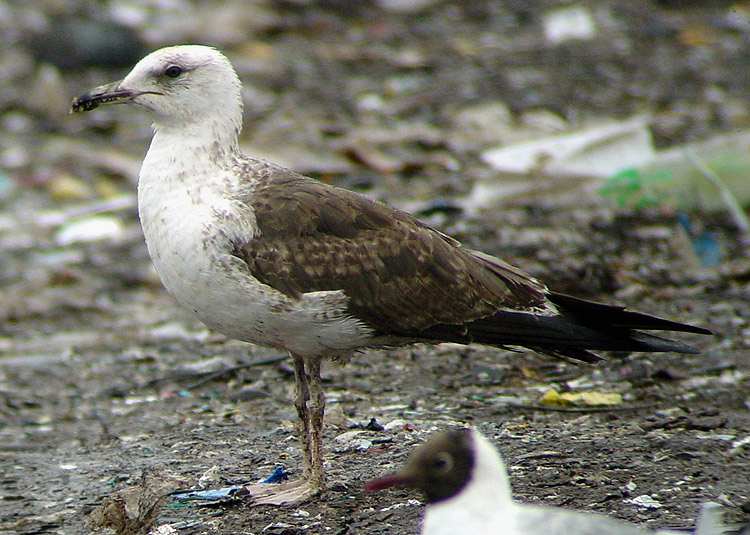 nominate Lesser Black-backed Gull (L. fuscus)
nominate Lesser Black-backed Gull (L. fuscus)
(last update:
(2 images) Larus fuscus fuscus 2cy, July 11-13 2003, Tampere, Finland (61.33N 24.59E).
This 2cy fuscus shows very barred second generation wing-coverts, especially the inner greater coverts, but in all other respects it is very typical 2cy fuscus in Finland in July. All primaries, P1-P10 are second generation, all rectrices and secondaries were moulted on the wintering grounds as well. The upper scapulars are third generation already, rather brown but lacking any obvious barring or patterns, except the dark shaft-streak. Three lower lesser coverts have been replaced recently as well, probably third generation feathers and the dark coverts stand out in the otherwise barred wing-covert panel.
This is an example of typical Finnish fuscus, representing average 2cy fuscus in completely replaced primaries, rectrices and secondaries on the wintering grounds, prior to northbound migration. The new second generation primaries are only a couple of months old and still look dark blackish. The second generation tail-feathers normally still show the white tips, but in some individuals these tips are worn away when 2cy birds arrive back in Scandinavia. Immediately after returning in Scandinavia some 2cy fuscus start a new moult cycle in the inner primaries, now growing in third generation feathers.
|

